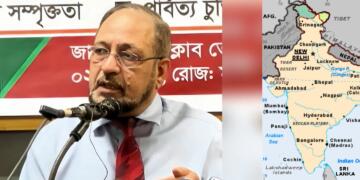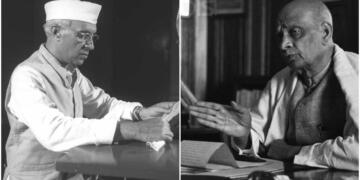Many pollsters and political analysts have cowered from taking a clear position on which way they believe the winds are blowing in West Bengal, preferring instead to preserve their credibility by hiding behind platitudes like ‘close race’. Indeed, they have much to fear. A state election assumes such importance only on rare occasions, and the risk of calling it wrongly is not a dent that the industry of political punditry can afford at this stage, standing as it does on a very shaky wicket. Therefore, to maintain the narrative of a close race which can swing drastically on any side at any moment, here are five trends which they have refused to acknowledge.
The underestimation trend
When most pollsters deliver their findings from exit or opinion polls for Uttar Pradesh, they do so with a caveat- that such polls generally underestimate Mayawati’s BSP for various sociological reasons. Ironically, since 2014, the BSP’s performance has been inadequate in comparison to polls which supposedly underestimate it to begin with. The caveat that pollsters actually miss is how the BJP’s electoral performance in the Modi era has consistently outdone their numbers. In both 2014 and 2019, talk about whether the NDA and not the BJP would cross the halfway mark of 272, dominated mainstream media discourse. Similarly, in the Uttar Pradesh elections of 2017, most experts hesitated to call a simple majority in BJP’s favour. In hindsight, the results indicated that a blind man would have spotted the saffron wave on the ground. This is not to discredit the experts, their methods, or to speculate on their bias. This is merely to establish that political punditry since 2014 consistently undermines the BJP in all important elections, and that this is by itself a factor which we must take into account while predicting how West Bengal will vote.
The floodgates trend
No state in India witnesses the kind of political violence is now synonymous with West Bengal. Murders of political opponents, ballot boxes being flung into rivers or being set on fire, voters from the opposition camp being intimidated, are tactics which the state’s ruling parties have used with impunity to cling on to power. In the 2009 general elections, the Mamata Banerjee led Trinamool Congress emerged as a strong opposition to the dominant Communists for the first time in many decades, winning 19 of the 42 seats. A clear message was sent across the state- that a viable alternative had arrived on the scene and that it was strong enough for people to rally behind without any fear of retribution. In the months to come, many decades of communist rule was relegated to the gutters of history forever. Ten years later, there can be little doubt that the BJP has followed a similar playbook. In fact, the BJP has doubled-down on this playbook after winning 18 of the 42 seats in the 2019 general elections. Where you had Mamata the opposition leader once upon a time delivering this message to the voters not to fear and vote for change, you have the Prime Minister, the Home Minister and a gamut of well-known faces doing the same. The BJP has amplified its voice and made its presence felt, projecting itself as a strong alternative in no uncertain terms. What the experts need to answer at this point therefore is not why there will be a saffron avalanche, but why there won’t be one. One cannot think of a single concrete step the Trinamool has taken to arrest this potential saffron swing. Au contraire, real issues like the government’s disastrous handling of cyclone Amphan and the Chinese Virus would have only enhanced this downward spiral if at all. The message that BJP is a strong alternative which people can vote for without any fear could have been countered in many ways. But propping the street-fighter Chief Minister on a wheel-chair, in the face of defections and low morale, is probably not one of them.
Essentially, there is nothing convincing at the moment to indicate that the floodgates which opened in favour of the BJP in 2019 have been closed by the Trinamool. In fact, everything points to the contrary.
The collapse trend
The 18 seats which the BJP won in 2019 were in no small measure due to Mukul Roy. Being Mamata’s chief strategist, Roy’s defection to the BJP ahead of the 2019 general elections was not just as a shot in the arm for the BJP. More importantly for the saffron party, it resulted in a significant collapse for the Trinamool machinery. Junior leaders at various levels followed Roy, along with their supporters and resources. Ahead of the 2021 elections, hardly any of the erstwhile senior leaders of the Trinamool continue to be with the party. Most have defected to the BJP, eroding the party’s rank and file. Essentially, the party is a hollow shell, or at least it is hollower than it has ever been. A complete collapse of the party’s organisational backbone during the elections is hardly a stretch of the imagination, while several smaller crunches occurring in various parts of the state at different levels is imminent. The BJP is of the opinion that it was well on its way to win 23 of the 42 seats in 2019, had it not been for the Trinamool cadre which resorted to violence and intimidation. Even if this claim is taken with a pinch of salt, the Trinamool’s collapse after the 2019 elections is a case-study, and will without doubt hurt its prospects in terms of cadre and resources.
Besides, the ruling party will be able to use the state government machinery to a lesser extent than ever before. This is in stark contrast to the Communist era, when the line between cadre and government servant did not exist, a trend which continued into the Trinamool era. The difference this time is that the Election Commission has utilized its mandate and has been two steps ahead of this menace. From splitting the election into eight phases, sending an unprecedented number of central forces to oversee the process, removing the erstwhile DGP and even asking the state police to stay away from polling booths, the commission has pulled all stops to ensure a level-playing field. The state police in its recent report claimed the incident involving the Chief Minister in Nandigram was an accident and not an attack, an assertion which would have been unthinkable a few weeks back.
Clearly, both the party and the government machinery are free-falling, at least when it comes to their utility in helping the ruling party cling on to power.
The exodus trend
Away from air-conditioned television studios, nobody grasps the political climate better than politicians who remain attached to the ground and have skin in the game. The constant feedback from daily interactions with hundreds of individuals belonging to various walks of life, and the ability to process all that data irrespective of the brave face they put on publicly, is what sets them apart from the so-called experts. However, their actions, especially those that scream survival, often betray which way the winds are blowing. And it doesn’t take a rocket scientist to figure out which way that is when senior sitting ministers, MPs and MLAs begin to quit the ruling party to join the primary opposition party ahead of a high-stakes election. Knowing very well that no promotion is in store for them on the other side of the fence, since there can only be one Chief Minister at the end of the day, and that the consequences of their shift could be disastrous if they have miscalculated, most mass leaders worth their salt have shifted to the BJP camp nonetheless. One can make the argument that the senior most state-level leaders have attained their political peaks in the family-led Trinamool, and see much more scope for growth in a national party such as the BJP. But the underlying argument here, that they would risk their electoral prospects for potential growth in stature, is ridiculous. After all, they derive their importance from their electability. This argument is further punctured by the fact that the current trend is not limited to the senior most leaders, but has percolated down to the MLA and even the non-elected candidate level. This is an election in which electoral survival has become synonymous with the BJP.
Much like the government machinery which has suddenly rediscovered its independence at least partially, the Bengali film industry too has begun displaying the same trend. Tightly controlled by the ruling party traditionally, it is witnessing important players break away from the cartel’s clutches. Once again, for those whose livelihoods depend on important connections and public response, such risks would in all probability be thought through. The fact that many of them with skin in the game are openly batting for the BJP reaffirms the trend that we are witnessing in other walks of life.
There is no reason to believe that this trend, at multiple levels and in many walks of life, is not backed by solid ground reality. The exodus from the Trinamool to the BJP should have been enough for most analysts to call this election. Despite the coverage and commentary, notice how no expert has really given any reason why this mass defection everywhere is not based on sound logic.
The desperation trend
A cursory glance at the Trinamool’s recent functionings indicates that its strategy is in shambles. While there is hardly any doubt that the communal-secular game or the insider-outsider game has worked in Indian politics, playing these games in West Bengal after the 2019 elections was ill-conceived. The 2019 verdict indicated that a substantial chunk of voters had made up their minds against such games. And yet, instead of taking a hint, the Trinamool doubled down on them. The appeasement of one community at the cost of the majority continued unabated, while the party’s assertion about their opponents being outsiders grew louder. Today, realising that Jai Sri Ram has become a cry of resistance, the party has taken a sharp u-turn. Temple-runs and the chanting of mantras has begun. On the eve of elections, where does this leave the party in terms of messaging? Similarly, with Prashant Kishore becoming a household name and Yashwant Sinha’s entry amidst much fanfare, the party seems to have abandoned the insider-outsider game on the eve of elections as well. Amidst this cycle of circles and u-turns, the party has struggled with optics in general. Desperate times have called for desperate measures, like the Chief Minister attempting to ride a scooty for the first time. The Chief Minister changing constituencies has not helped the overall perception around the party either, furthering the impression of an unconfident and confused house. Much like the Congress Party head of 2014, 2019 and several other state elections, that tipping point has reached where people ask themselves what exactly this party stands for and fail to get a clear answer. Desperation is just a sign of the party realizing that they’re past his tipping point, and bumbling and fumbling in denial.
These five trends – underestimating the BJP, the swing towards the BJP, the collapse of the Trinamool, the judgement of people with skin in the game, and Trinamool’s desperation- seem crystal clear. Note that these are not factors but trends, meaning these are movements in time towards something, and that they are ongoing. Perhaps the elections are as close as the experts seem to suggest, but the fact that they have turned a blind eye to these trends seems fishy. The narrative amongst experts continues to be that Mamata is a tough opponent to beat. Although there is no doubt about it, it does not explain why they should use this narrative at a time when she is at her weakest. What gives?






























What gives?
??